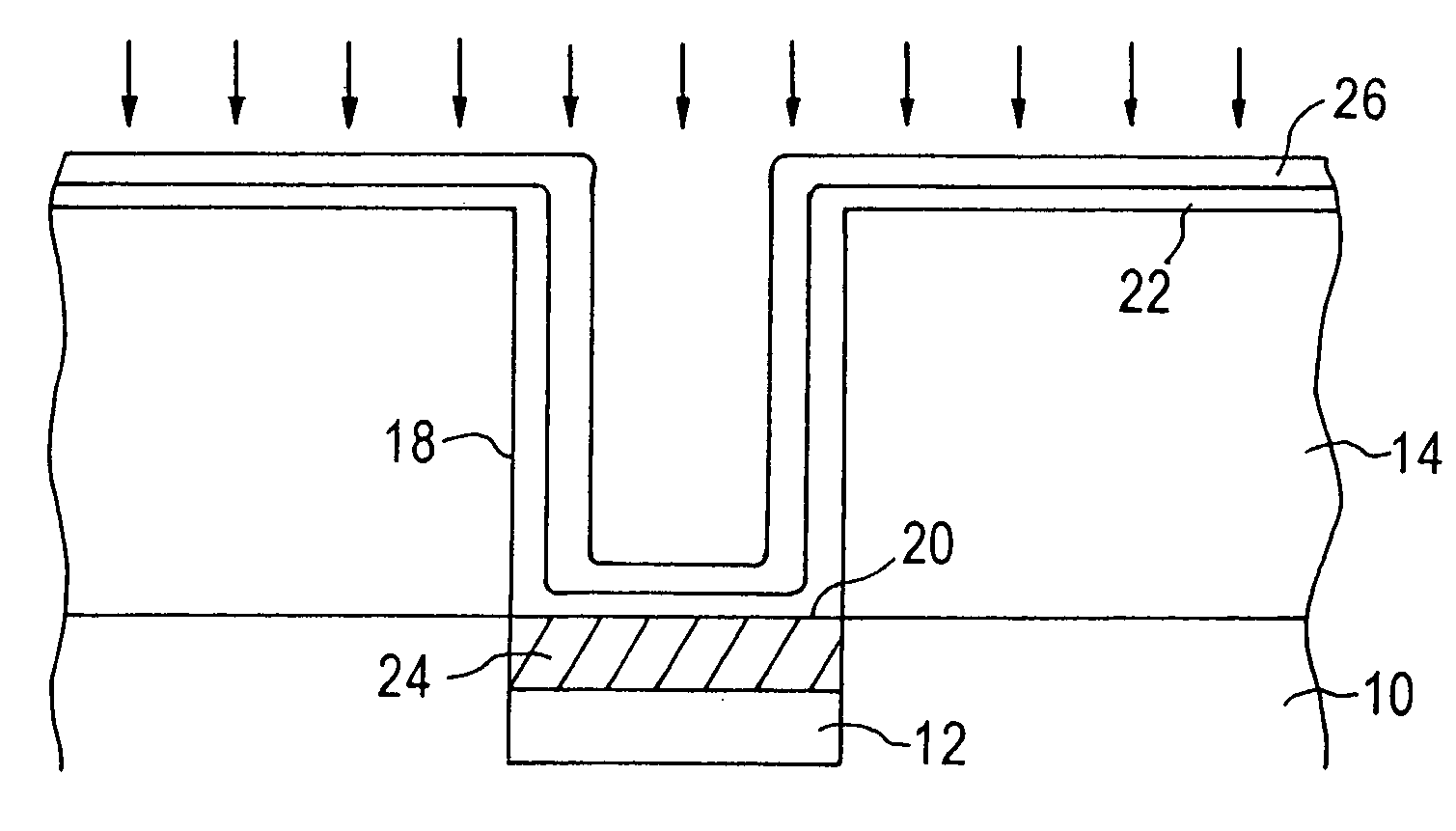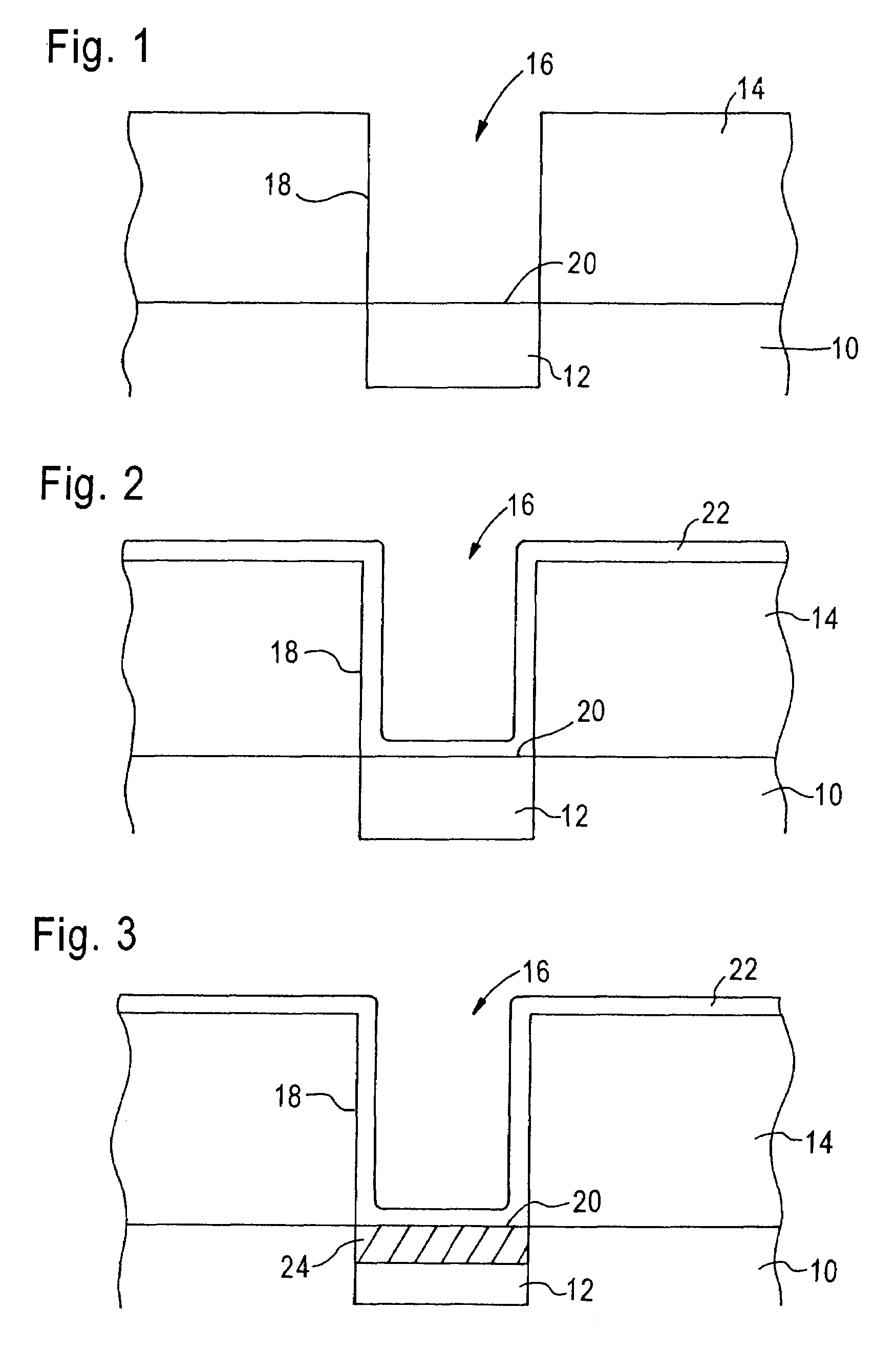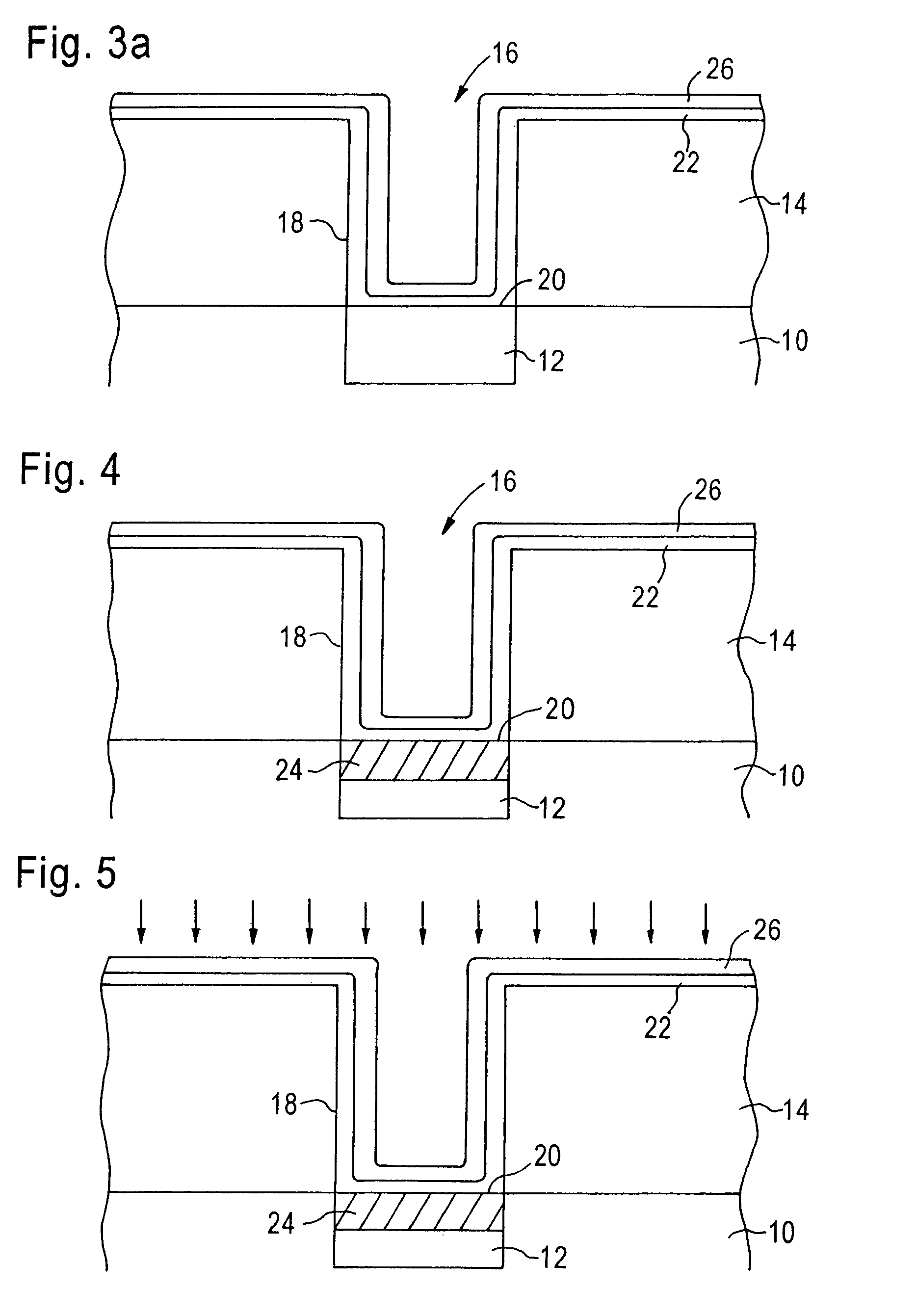Method of forming a contact in a semiconductor device with formation of silicide prior to plasma treatment
a technology of silicide and contact, which is applied in the manufacturing of semiconductor/solid-state devices, basic electric elements, electric devices, etc., can solve the problems of short substrate, insufficient thickness of less desirable thick titanium nitride barrier metal layer in more highly integrated circuits
- Summary
- Abstract
- Description
- Claims
- Application Information
AI Technical Summary
Benefits of technology
Problems solved by technology
Method used
Image
Examples
Embodiment Construction
[0021]The present invention addresses and solves problems related to the formation of a contact in a semiconductor device, and particularly to problems arising from the plasma treatment provided to contact barrier metal layers and its effect on the contact metal underneath the barrier metal. This is achieved by the present invention, in part, by the formation of a silicide with a refractory metal contact layer and the conductive region of the substrate, prior to the formation of the contact barrier metal layer. In other embodiments, the contact barrier metal layer is formed on the contact metal, but the plasma treatment is not performed until after formation of the silicide. Hence, when the plasma treatment is performed on the contact barrier metal layer, the titanium silicide has already been formed. This prevents the titanium in the contact metal layer from being prematurely converted to titanium nitride before being able to be converted to titanium silicide.
[0022]FIG. 1 is a sche...
PUM
 Login to View More
Login to View More Abstract
Description
Claims
Application Information
 Login to View More
Login to View More - R&D
- Intellectual Property
- Life Sciences
- Materials
- Tech Scout
- Unparalleled Data Quality
- Higher Quality Content
- 60% Fewer Hallucinations
Browse by: Latest US Patents, China's latest patents, Technical Efficacy Thesaurus, Application Domain, Technology Topic, Popular Technical Reports.
© 2025 PatSnap. All rights reserved.Legal|Privacy policy|Modern Slavery Act Transparency Statement|Sitemap|About US| Contact US: help@patsnap.com



